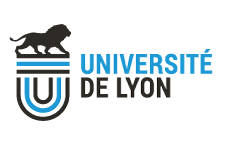WP2. Task 2. Developing an interdisciplinary approach of the history and ecology of languages
Objectives
- Increase our knowledge of the emergence of human cognition and language
- Describe and model this emergence with various ecological contexts
- Decipher the linguistic, social, and cultural mechanism of language evolution
- Develop description and modelling of linguistic change
- Develop complex corpora based research methods
- Update linguistic historical classifications
Background
Important previous work has been done with by ASLAN members in the field of evolutionary linguistic, historical linguistics, language change and grammaticalization. For instance, the large linguistic/genetic study carried in West Africa brought a part of the Human history in Africa in the open (e.g. Quinitana-Muci et al., 2008; Van der Veen et al., 2009).
In parallel, a large database on sound changes has been designed and compiled (Ben Hamed & Flavier, 2009). Within the domain of French, studies have been carried on grammaticalization processes contributing to the general theoretical discussions in the field (Marchella-Nizia, 2006) and about specific key topics, such as the demonstrative and deictic systems (Guillot, 2006).
These studies are founded on the first French texts reference corpus annotated on multiple linguistic levels related to research topics (morphosyntax, syntax, discourse levels). The methodology used is implemented in the TXM reference software platform for statistical analysis of textual data (Heiden, 2010).
In parallel, a large database on sound changes has been designed and compiled (Ben Hamed & Flavier, 2009). Within the domain of French, studies have been carried on grammaticalization processes contributing to the general theoretical discussions in the field (Marchella-Nizia, 2006) and about specific key topics, such as the demonstrative and deictic systems (Guillot, 2006).
These studies are founded on the first French texts reference corpus annotated on multiple linguistic levels related to research topics (morphosyntax, syntax, discourse levels). The methodology used is implemented in the TXM reference software platform for statistical analysis of textual data (Heiden, 2010).
Description of work
- Renew historical linguistics in an interdisciplinary framework with archaeology, demography, etc.
- Promotion of an ecological approach to languages, taking into account a diversity of ecologies at different levels (micro, meso, macro)
- Development of the diachronic description of Indo-European (e.g. French) and Bantu languages
- Modelling continuity and abrupt change between Latin and Old French languages
- Development, modelling, and diffusion of diachronic databases
- Development, modelling, and outreach of statistical text analysis software
- Modelling language origin and evolution
- Integration of spoken data into diachronic description; initiation of studies on linguistic change in interaction
- Contributing to the casual debates on grammaticalization, degrammaticalization, pragmaticalization
Criteria of achievement
- Organization of a unified framework integrating typology, diachronic and cognition
- Modelling of population siez and ecological constraints in Sub-Equatorial Africa in the last 5000 years
- Production of an integrated history of linguistic and population contacts between hunter-gatherers and agriculturalists in Sub-Equatorial Africa
- Reappraisal of the classification of African languages
- Implementation of an unified and formalized model of lexical tokenization, morphosyntactical and syntactical description of medieval French (9th to 15th century)
- Production of a corpus-based historical grammar of French
- Production of a fully operational software platform, for statistical analysis of texts which complies with the highest data and software architecture standards
Some recent works
Heiden, S. (2010). The TXM Platform: Building Open-Source Textual Analysis Software Compatible with the TEI Encoding Scheme. In K. I. Ryo Otoguro (Ed.), 24th Pacific Asia Conference on Language, Information and Computation - PACLIC24 (p. 389-398). Institut for Digital Enhancement of Cognitive Development, waseda University, Sendai, Japan. Online.



 Accueil
Accueil Nous contacter
Nous contacter WebAdmin
WebAdmin